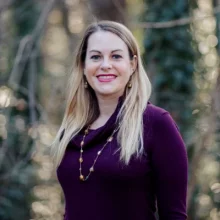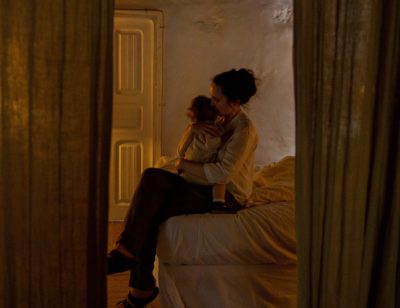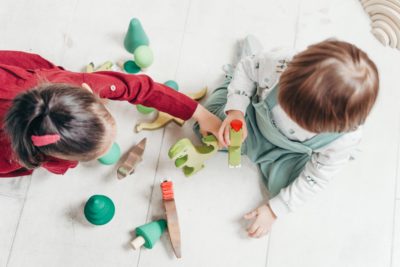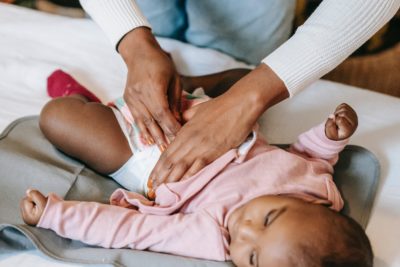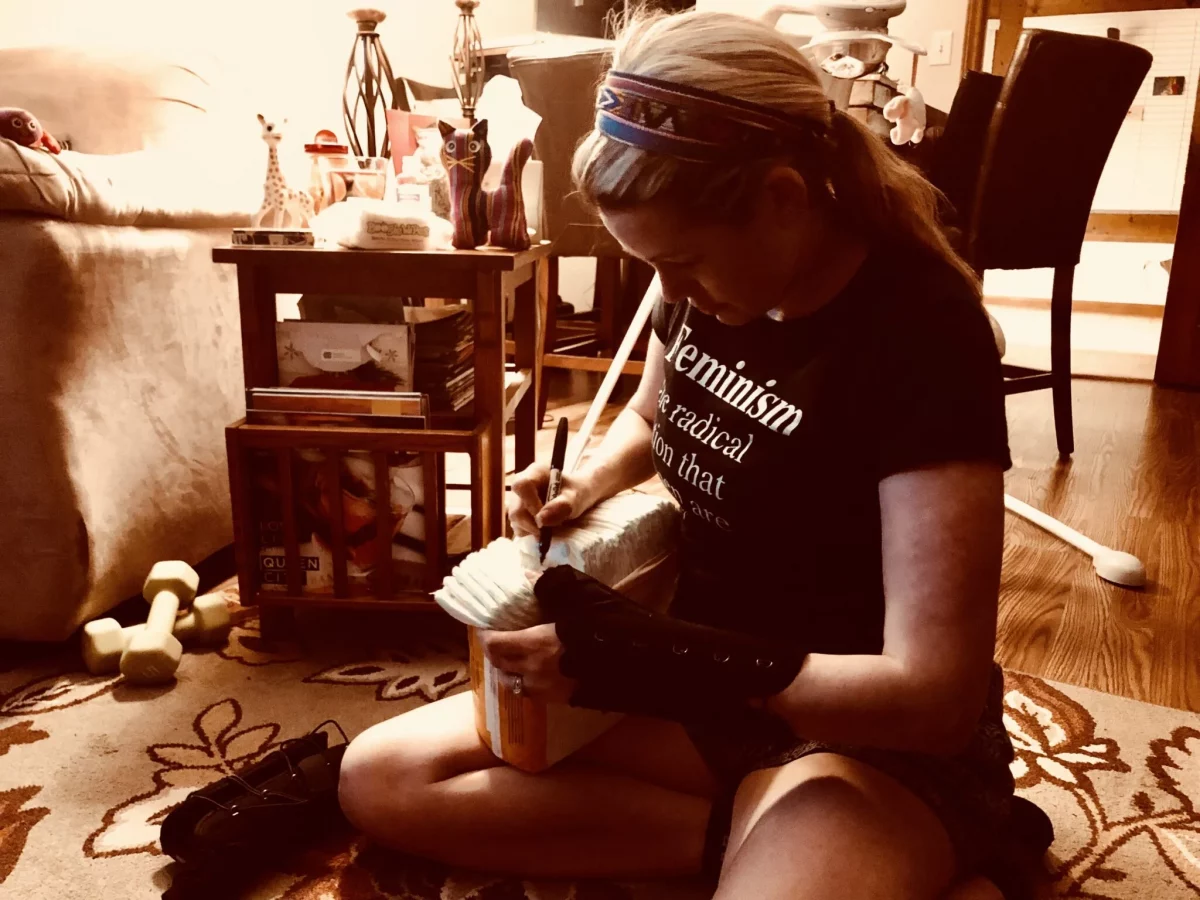

Every parent or caregiver’s experience in navigating child care is different. Recently, I was talking with someone about some of the things I’ve personally learned since our child started attending a local early care and education center, while my husband and I work, Monday to Friday. The more I went on about the added tasks to my day and the things we parents must do in preparation for sending our child to be cared for and taught by someone else, the more I felt tired and the more my audience was amused and surprised.
It’s a lot to juggle. And it’s exhausting, but we’re adapting.
At the same time, it can be incredibly different based on someone’s race or economic status, and I recognize the privilege I carry as a white woman with a partner, and a two-income household. Those three things stare back at me every time I complain to myself in my head; nevertheless, the first days of having our baby cared for elsewhere felt like someone had ripped my heart out. This little one is growing so fast and I don’t want to miss a moment, but I also want to work.
And I’ve learned a lot in the past four months. The following are 12 of my personal takeaways:
- Waitlists are real and space is limited for early care and education centers. I should have gotten on a waitlist as soon as I found out we were expecting, but I was too sick and tired to think about this, and had no idea where to begin. I was just trying to make sense of what was happening to my body and how to care for the baby growing inside. We got on the waitlist at about 20 weeks gestation in June 2021, which meant only part-time availability by the time I went back to work in January 2022. There is a Child Care Resource & Referral program in North Carolina. I wish I’d known about it sooner.
- My baby already has empathy. Our baby, who rarely cries, cries when other babies cry. This was one of the first things the administration told us when they gave us feedback about the adjustment to “baby school,” as we call it.
- Your baby changes outfits more than celebrities at the Oscars. At least that’s what we say when a baby has an accident during a diaper change or spit-up that means an immediate preference — or need — for a different outfit. We’re required to keep two spare outfits at school, but recently I sent eight, all labeled, to prevent the frequent need to supply more clothes. Every day that week, the baby came home in a different outfit than the morning arrival. Our Little Tree must have known, there was a selection to choose from.
- Parents have to stock and label diapers for child carer. Label. Every. Single. One. Can you imagine sitting down to write your child’s name on every diaper that goes with them? I try to do it while watching television or a webinar that I’m just “listening” to rather than on screen. It’s inevitable that every time my hand gets ink on it.
Plus, there’s already an overlooked diaper need. Without diapers, parents can’t send their children to child care, and without child care, parents can’t go to work. Diapers help parents work and set children up for more success in their future education. - Supply and label wipes for the diaper changes at baby school. We use a couple wipes per change. So those go fast too. And we don’t want to send a lesser quality of wipes just because the baby is not with us. So, we buy wipes in bulk. See above notes under No. 4.
- Supply and label fresh bottles for every single day and they’re used with rules like a buffet line. We started with taping post-it notes to the bottles. Then we ordered a variety pack of multicolor masking tape, only to learn that someone actually produces “bottle labels.” Wait, they make “bottle labels?” So now we actually have labels to write name, date, and contents on for the regularly cleaned and freshly supplied with breast or formula milk bottles that go to and from baby school each day.
Meanwhile, there’s a formula shortage, so on days when I haven’t produced enough breast milk, we must rely on powdered milk, which is ever increasingly unavailable or increasing in cost.
And we learned there’s regulations on bottle usage at the center, much like a buffet. Once the baby’s mouth has used a bottle for feeding, they can’t pick it up again to finish it later. - There are viruses and diseases you have never heard of or thought didn’t exist anymore that are still very real in early childhood. Hand, foot, and mouth disease is still a thing and apparently adults can get RSV from kids. Need I say more? If your baby or toddler is about to start child care, here’s a 2019 blog with what you need to know about the inevitable germ onslaught. And babies get sick a lot in the first year, but especially more so with all that extra close contact with fellow babies.
- Navigating the ever-changing health and safety regulations landscape takes a lot of patience and attention. Keep your distance. Don’t enter the building. Enter only certain parts of the building. Masks on. Masks off. Quarantine or isolate for five to 10 days. It’s hard to keep up.
- No vaccines for COVID-19 are available for children 5 and under yet. So those of us who have little ones still have little freedom and rely very heavily on mutual consideration within our little early care and education communities to ensure health, safety, and well-being. This means we’re not living freely yet. While most adults have their masks off, ours will stay on. We’re left behind. They’re coming soon, but not fast enough.
- As much as you have preferences for your parenting style, you cannot totally influence others’ teaching styles. We aspire to utilize a gender-neutral parenting style and be as inclusive in our celebration of holidays. We are more focused on offering all colors — not just pink or blue — and a variety of activities regardless of gender. Marketing says if you have a boy, they’re not going to want to play in a toy kitchen, and a girl might not be playing with race cars.
We want our child to choose their interests based upon their interests, not societal expectations. For the sake of this blog, I am keeping details about our child confidential, but it pains me that we focus so much on “sweet boy” or “good girl,” rather than on just who they’re exploring what their interests are and identity means to them. - It is hard to find a center as inclusive or perfect for all the things your family may or may not celebrate and identify with. While it was absolutely adorable to receive photos of our baby wearing a headband with bunny ears and a photo with an Easter bunny, what if we didn’t celebrate Easter? Did they acknowledge Ramadan too? I’m trying to figure out how to bring up concerns without criticizing or being negative. I never want to antagonize the people who are caring for, loving on, teaching, and guiding my child through the most tender years.
- You will never pay what quality early childhood care and education is worth to compensate the people who provide loving care for, yet it’s costing way too much. People who work with infants, toddlers, and preschoolers don’t get paid a fair, living wage and are often not even provided benefits, but child care costs exceed college tuition in North Carolina. Right now we’re paying $1,469 a month for one infant, and in August it’ll go up to $1,542. Because of the costs of child care, we cannot afford a second car (yet) and may not be able to afford a second child. We are getting high-quality early childhood education and care for our baby, but it’s not affordable for us.
Is having a child in America becoming an unattainable privilege? That’s an analysis for another day. But, either way, all teachers, whether birth-5, K-12, or higher education, deserve and should be compensated with worthy wages and benefits for worthy work.
Early childhood & parenting learning continues
So many lessons. And they continue. I’m tired.
The ultimate epiphany?
Navigating early care and education systems is hard for everyone right now, and it doesn’t do justice for anyone on either side of it.
No matter what, there’s guilt and a problem to solve. I have realized I didn’t want my baby at home because I couldn’t concentrate on work and at home there would be no socialization with other little ones, but I also didn’t want my baby away from me in a building I’d never been able to enter and see for myself with people I’d never been able to meet because of a pandemic. Alas, I had to trust the process, because parenting is the ultimate group project.
Without early education teachers like Ms. Laura and Ms. Liset, as part of the team, I would not be able to continue the career I love and we would not be able to pursue our financial and life goals and interests. And that is something I don’t take for granted. I’m so grateful to have them on our team.
Again, I recognize that even having access and being able to afford child care is a privilege that many parents and caregivers cannot afford, especially single parents, people with more children, and lower-income parents, which tend to be women and people of color. Some parents might want child care and can’t afford it, while others want to stay at home with their children, and some don’t have a choice either way. What are families’ and care providers’ early childhood aspirations? I respect and support whatever someone’s choice or desire is. We all should. And we must do more to support them.
No circumstance is the same, and it’s rarely easy. The lessons will continue to grow, just like our Little Tree. Either way, we need a system that supports and allows for parents to have choices for options for their children to learn, grow, and work in their communities, in the most successful way possible.
